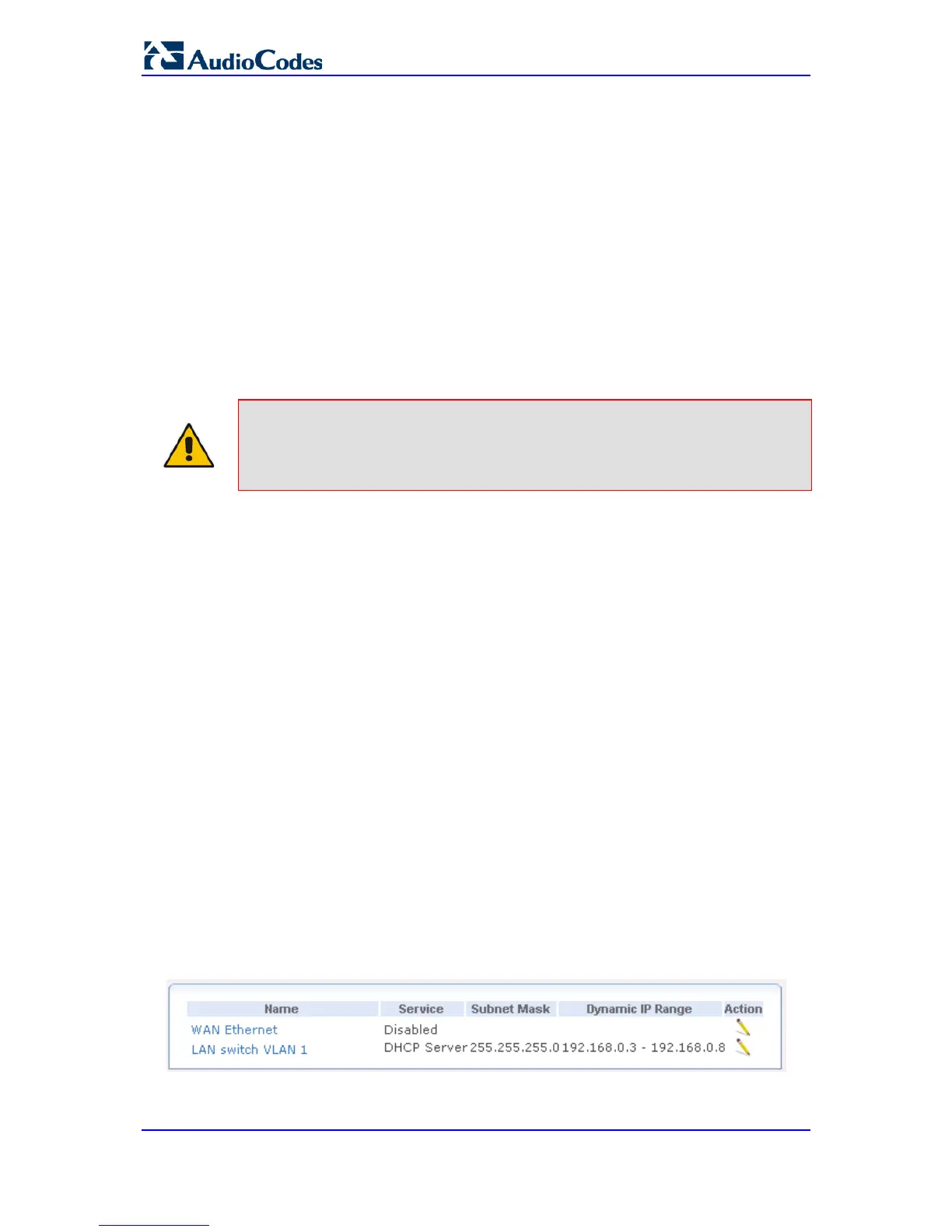User's Manual 568 Document #: LTRT-12809
Mediant 800 MSBR
44.2 Configuring DHCP Server
Your device's Dynamic Host Configuration Protocol (DHCP) server makes it possible to
easily add computers that are configured as DHCP clients to the home network. It provides
a mechanism for allocating IP addresses and delivering network configuration parameters
to such hosts. The device's default DHCP server is the LAN bridge. A client (host) sends
out a broadcast message on the LAN requesting an IP address for itself. The DHCP server
then checks its list of available addresses and leases a local IP address to the host for a
specific period of time and simultaneously designates this IP address as `taken'. At this
point the host is configured with an IP address for the duration of the lease. The host can
choose to renew an expiring lease or let it expire. If it chooses to renew a lease then it also
receives current information about network services, as it did with the original lease,
allowing it to update its network configurations to reflect any changes that may have
occurred since it first connected to the network. If the host wishes to terminate a lease
before its expiration it can send a release message to the DHCP server, which then makes
the IP address available for use by others.
Note: By default, the device’s DHCP server is enabled. Therefore, when connecting
the device to your enterprise’s LAN, the device responds to DHCP requests
and cons
equently distributes IP addresses (instead of your Enterprise’s
DHCP server, if exists).
Your device's DHCP server:
Displays a list of all DHCP host devices connected to the device
Defines the range of IP addresses that can be allocated in the LAN
Defines the length of time for which dynamic IP addresses are allocated
Provides the above configurations for each LAN device and can be configured and
enabled/disabled separately for each LAN device
Can assign a static lease to a LAN PC so that it receives the same IP address each
time it connects to the network, even if this IP address is within the range of addresses
that the DHCP server may assign to other computers
Provides the DNS server with the host name and IP address of each PC that is
connected to the LAN
The device can also act as a DHCP relay, escalating DHCP responsibilities to a WAN
DHCP server. In this case, the device acts merely as a router, while its LAN hosts receive
their IP addresses from a DHCP server on the WAN. With the device's optional Zero
Configuration Technology feature, the IP Auto Detection method detects statically-defined
IP addresses in addition to the device's DHCP clients. It learns all the IP addresses on the
LAN, and integrates the collected information with the database of the DHCP server. This
allows the DHCP server to issue valid leases, thus avoiding conflicting IP addresses used
by other computers in the network.
To configure DHCP:
1. Click the DHCP Server item (Configuration tab > Data menu > Data Services
submenu > DHCP Server); the following page appears:
Figure 44-3: Configuring DHCP Server
The page displays a summary of the services currently being provided by the DHCP
server.

